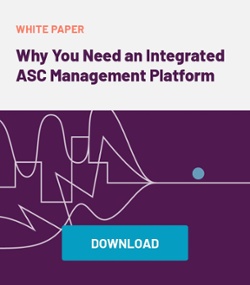
- Practice Management Systems, ASC Billing
- BY: David Howerton
- Jul 2, 2019
The rise of High Deductible Health Plans has shifted the healthcare cost burden to the insurance policyholder. As more patients choose HDHPs, ASCs must learn how to navigate this change in patient responsibility. From increased patient education efforts to best billing practices, ASCs — with their usual speed — must adapt to this changing payer/provider landscape.
HDHPs Come Home to Roost
Acting on the assumption that HDHPs would stem a rumored over-utilization of healthcare spending, many employers embraced them for the first time in 2006. In 2007, 85% of adults with employment-based health coverage were enrolled in a traditional plan, with an average deductible of $379 (adjusted for inflation) for single coverage. Today, only 56.6% have a traditional plan, with 43.4% enrolled in a HDHP. The average HDHP deductible stands at $1,350 today, or more than triple the 2006 figure for a traditional plan.
In addition, a study by the Los Angeles Times and Kaiser Family Foundation found that “Over the same time, insurance premiums also increased, rising at more than double the rate of inflation and outpacing wage gains.”
When patients access healthcare, it’s not likely they have the funds to meet even the lowest deductible before doing some major financial juggling. According to federal data, 61% of adults could cover an unexpected $400 expense, but 39% would have to borrow, money, sell something, or simply not be able to cover it at all.
For ASCs, these plans are having an impact on the bottom line. While Medicare and Medicaid are growing, commercial pay still accounts for the majority of ASC payments. The mean percent of gross charges for ASCs, as measured in VMG Health's 2018 Multi-Specialty ASC Benchmarking Study., breaks down as follows:
- Commercial: 61%
- Medicare: 20%
- Worker’s comp: 10%
- Other: 10%
- Medicaid: 7%
- Self pay: 6%
If the 43.4% figure above is applied to the commercial pay percentage from the VMG study, 26% of the average ASC’s commercial payer mix relies on HDHPs. Physicians may have been worried about how they would be paid by the uninsured; now it’s the patient responsibility portion of any HDHP policyholder that’s keeping them up at night.
To meet this emerging challenge, surgery centers are making changes in three areas: patient engagement and education; scheduling, and billing.
Patient Communication and Information
More than ever, patients need a solid understanding of their role in paying for their care. But unlike any other consumer purchase process, it’s hard for patients to get a clear picture of what they owe at the time of payment. ASCs — 36% never discuss a patient’s ability to pay before delivering services — need to take a greater role in patient education. Proactive communication about co-pays, deductibles and coinsurance well before a patient’s procedure is critical. Some have moved ahead of the game by directly addressing HDHPs with patients as part of their insurance and billing patient education. They provide clear direction on how patients can work with their insurer to determine their current deductible status and commensurate out-of-pocket responsibility.
 Scheduling
Scheduling
Many with HDHPs may elect to schedule their surgery early in the year to quickly meet their deductible. Some centers may have already encountered this, but others should prepare for higher than usual patient volumes in the early months of the year.
Best billing practices for HDHPs
HDHPs are intricate cost sharing agreements that can tax the skills of even the savviest revenue cycle management pro. Some have Health Savings Accounts — flexible healthcare spending dollars available to patients who set aside a pre-tax portion of their earnings — which can be used towards paying their deductible. Others don’t.
Still, flexibility is the watchword to successfully navigate billing and payments with HDHPs. Payment plans or flexible financial solutions, like the short-term payment plans offered by one center, are increasingly being used. A tiered campaign of letters and phone calls in the days and weeks leading up to a surgery to collect co-pays and deductibles also smooths the payment process.
HDHPs also up the ante for accurate coding. Now is the time to review billing and coding processes to avoid common coding mishaps that add to time and cost pressures.
You’ve Got This
HDHPs may be a wrench thrown into the dynamic surgery center environment, but given the ‘get-it-done’ culture of most ASCs, your center can handle HDHPs. With the right claims management tools to submit clean claims, and reporting to help you gain insight into all aspects of AR, getting paid the right amount at the right time has never been easier.
The Simplify ASC practice management software is the only management system designed specifically for ASCs from the ground up. It allows you to work just the way you do. Get the insight you need to run a profitable center and provide great care.
You’re going to love the way you work.

